Posts Tagged: printmaking
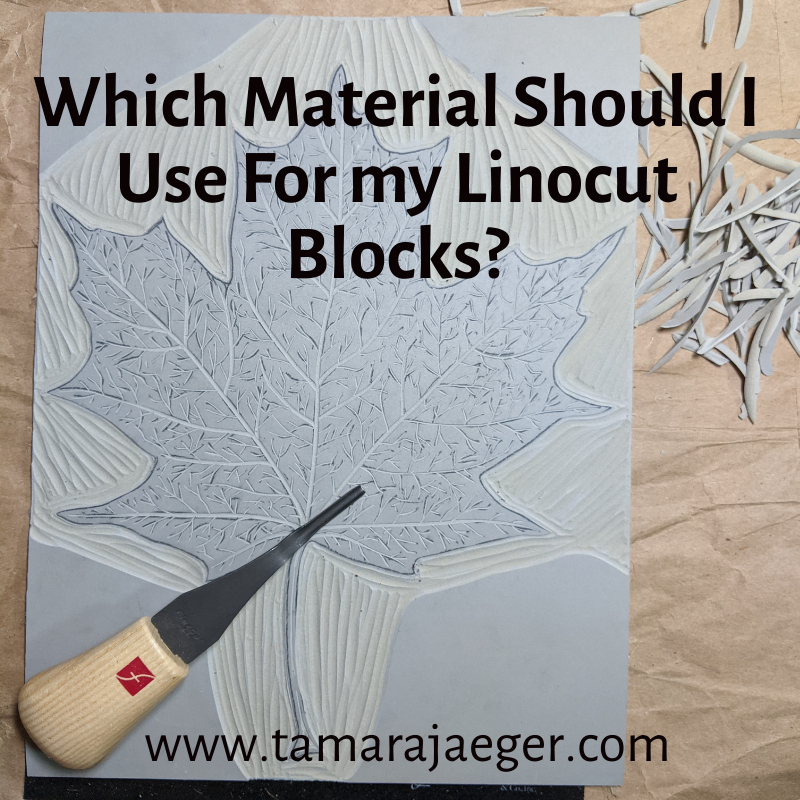

Which Material Should I Use For my Linocut Blocks?
Linocut is a printmaking technique similar to woodcut that uses a carved linoleum block to create an image. The block is inked and then pressed onto paper to create the print. You can use a variety of different materials for linocut blocks but like any material, each has advantages and disadvantages.

Linocut printing block materials: Speedy Carve, battleship grey lino, golden lino, Speedy-Cut
Traditional Linoleum: Traditional lino is made from a burlap-backed grey linoleum. This is the most common type of linocut block material and the one you’re most likely familiar with if you’ve done any linocut printmaking in school. It’s relatively inexpensive and easy to carve and produces sharp, detailed prints. However, traditional linoleum can become brittle with age and can crack if it is not handled carefully.
There’s also a version of traditional linoleum that is tan or golden in color rather than grey. This material is generally a bit softer and easier to carve than the grey version and doesn’t become as brittle over time but still produces sharp details.
You can get traditional linoleum that is mounted on wooden blocks or unmounted. Mounted lino is sturdier and less likely to curl or warp, because it is supported by the wooden block, but thicker, which can make positioning the paper a little more difficult.
I typically use unmounted lino because when I print, I place the block on the table first, then lay the paper down over it and apply pressure with a baren on the paper. You can place also the paper on the table, then place the inked block face-down on the paper and apply pressure to the back of the block. This method typically works better for the thicker mounted blocks and printing using a press rather than hand printing.
Vinyl Linoleum: Vinyl lino is a newer type of linocut block material that is made from a synthetic material. It is more expensive than traditional lino but is more durable and less likely to crack. The most common vinyl lino is Japanese vinyl, which has a blue side and a green side along with a black center. Either or both sides of the block can be carved. It’s a little softer than traditional lino but still produces sharp, detailed prints though it can be a little difficult to transfer the design to the block.
Softcut Lino: Softcut lino is made from a softer, more flexible rubber-like material. It’s easier to carve than traditional lino, especially for intricate designs, and is also less likely to crack. However, Softcut lino is more expensive than traditional lino and it can be difficult to produce really sharp prints.
Rubber: Rubber is another popular material for linocut blocks. It is more flexible, less likely to crack, and easier to carve than linoleum, making it a good choice for beginners. Its flexibility also means it can be used to print on curved surfaces. However, rubber can be more expensive than linoleum and can distort under pressure, making the prints less clear. Speed Ball Speedy-Carve is a common brand.
Foam: Foam is another material that is becoming increasingly popular for linocut blocks. It is inexpensive, very easy to carve, and produces soft lines. However, foam is not as durable as linoleum or rubber and can easily be damaged.
The best material for you will depend on your individual needs and preferences. If you are looking for a traditional material that is easy to carve and produces sharp lines, then traditional linoleum—either the battleship grey or the golden version—is a good choice. If you are looking for a material that is more flexible and less likely to crack, then rubber or vinyl are good options. If you are looking for a material that is easy to carve and inexpensive, then foam may be a good choice.

Carved linocut blocks
Want to stay up to date and see more of what I’m working on? Sign up for my mailing list here and get a FREE digital download of an exclusive tiger linocut print. (I promise not to be spammy with my emails—I hate that too!)
* Please note that this post contains affiliate links and any sales made through such links will reward me a small commission – at no extra cost for you.
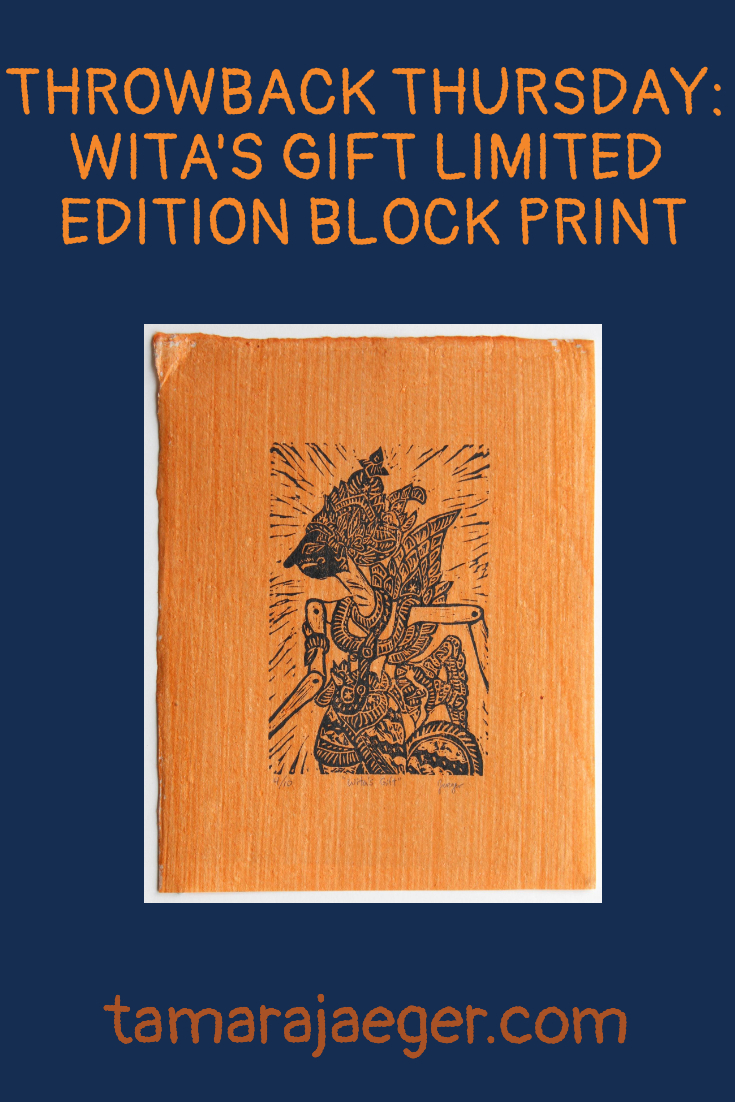

Throwback Thursday: Wita’s Gift Limited Edition Print
I picked up some fascinating paper on clearance a while back called “Shell Paper.” It’s a handmade paper with a coating made and emulsion of crushed shell, giving the paper an iridescent surface. It comes in several colors, each made with natural colorants.
I decided to try out the orange paper with my ‘Wita’s Gift’ shadow puppet design, since I thought the black-on-orange would be a great color scheme that would work well with the subject matter. You can get yours here or in my Etsy shop, here.
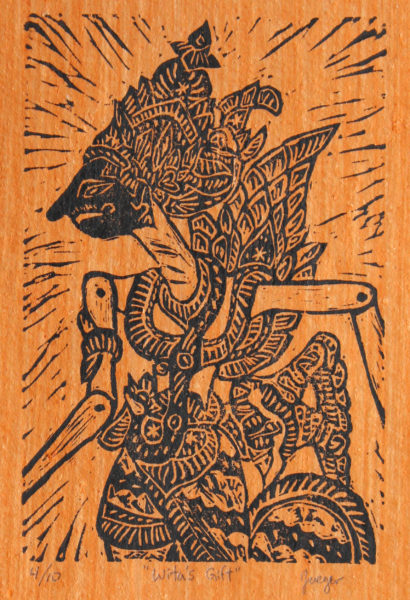
I have to say, I really like the look! I might try out a few different colors, but the orange is the most dramatic—most of the other colors are more subtle. There’s a yellow and a bright pink that are also pretty vivid, but I’m not sure they would work as well with the design.
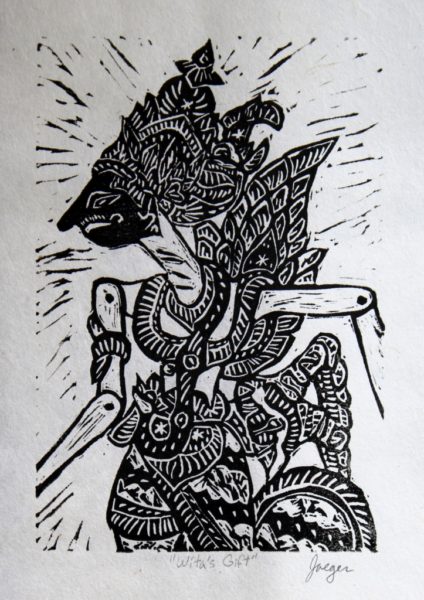
What do you think? Do you like the black and orange or do you prefer the original black and white version?
Want to keep updated and see more of what I’m working on? Sign up for my mailing list here and get a totally FREE digital download of a tiger linocut print. (I promise not to be spammy with my emails—I hate that too!)
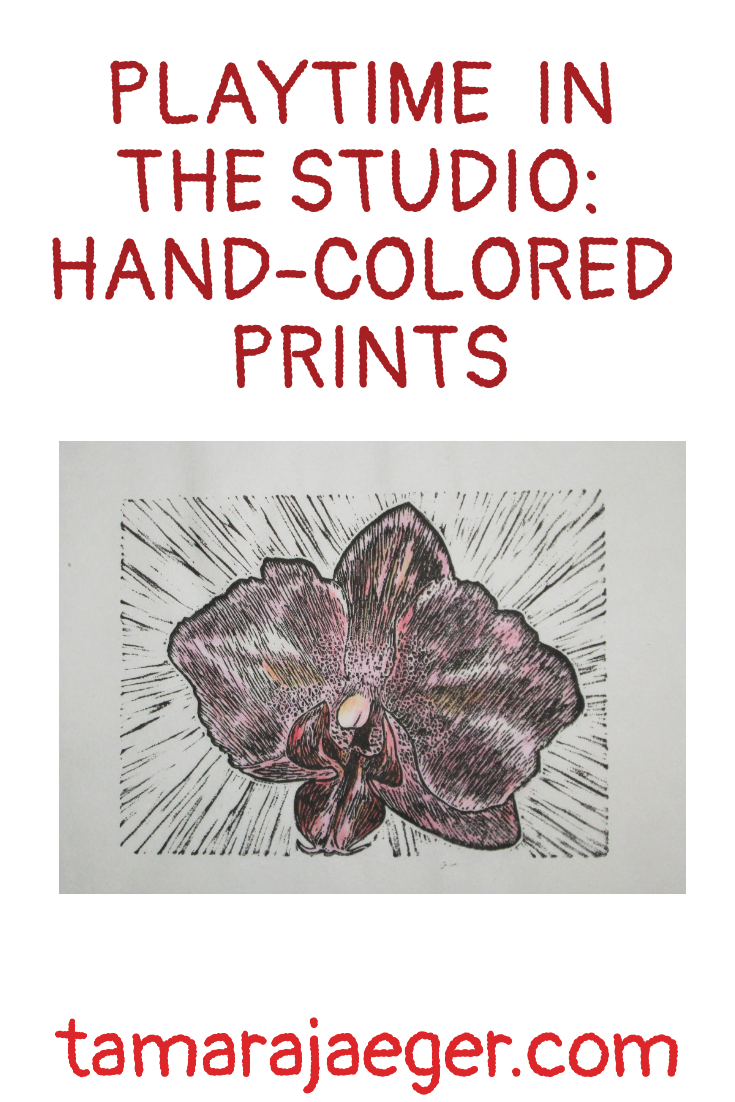

Playtime in the Studio: Hand Colored Prints
There are always a few prints that just don’t come out well. Maybe the ink is uneven, or the paper slips slightly. For whatever reason, not every print is ‘good enough.’ So, what do you do with the bad prints? You don’t really want to just throw them out, but on the other hand, they’re just taking up space and cluttering up the studio.
I decided to use my ‘junk’ prints to test out a few methods of hand-coloring my prints. Who knows, if it turns out well, it might be a nice alternative to offer, instead of just a single color print.
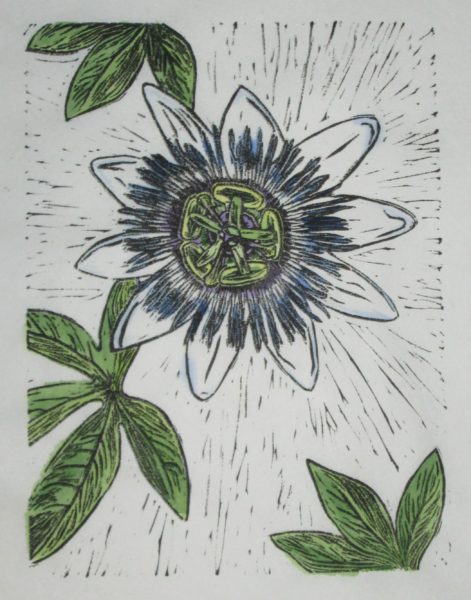
For a first trial, I tested watercolors and Derwent Inktense pencils to color in some of my passion flower prints. Derwent Inktense pencils are a water-soluble pencil that gives an ink-like intense color once wetted. They’re similar to watercolor pencils, but the colors are more intense.
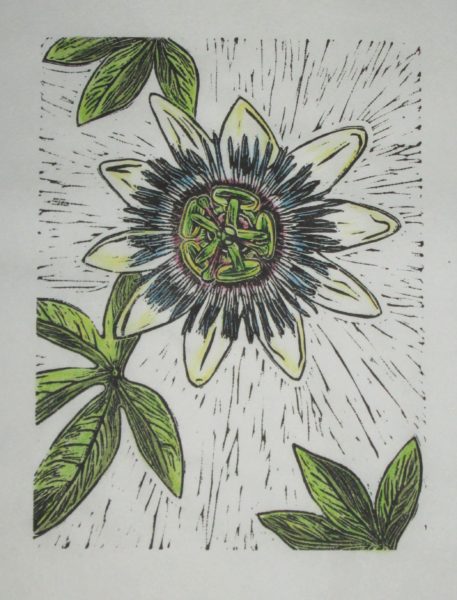
So, here I have a few examples. I’m not entirely happy with either method, though I think I like the Inktense pencils better—the colors are more vibrant and it’s much easier to control where the color goes compared to using watercolors. Watercolor pencils would probably work similarly as far as control, but the colors would be less intense. I might give that a try at some point.
What do you think? Do you like the watercolors or the Inktense pencils better? Or do you prefer the uncolored version? Let me know your thoughts!
Want to keep updated and see more of what I’m working on? Sign up for my mailing list here and get a totally FREE digital download of a tiger linocut print. (I promise not to be spammy with my emails—I hate that too!)
* Please note that this post contains affiliate links and any sales made through such links will reward me a small commission – at no extra cost for you.
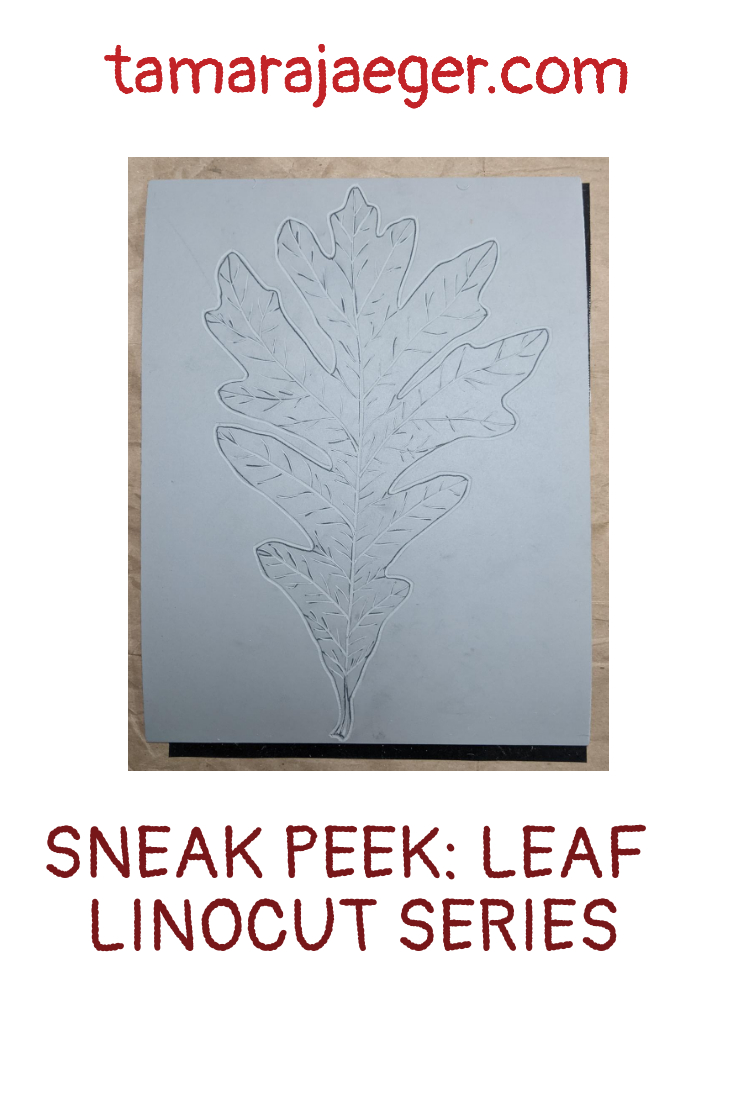

Sneak Peek: Leaf Linocut Print Series
I’ve been making a lot of flower prints lately, which is fine. I like flowers. I’ll have to post some of them soon—I’ve been a bit lax at sharing my newer work on here, though you can always see what I’m up to on my Instagram. Feel free to follow me there @tamarajaegerfineart !
But for a bit of a change, I’m currently planning out a series of leaf prints. All the fantastic colors last fall inspired me! I collected a bunch of neat-looking leaves to use as references and I’m all fired up and ready to get started!
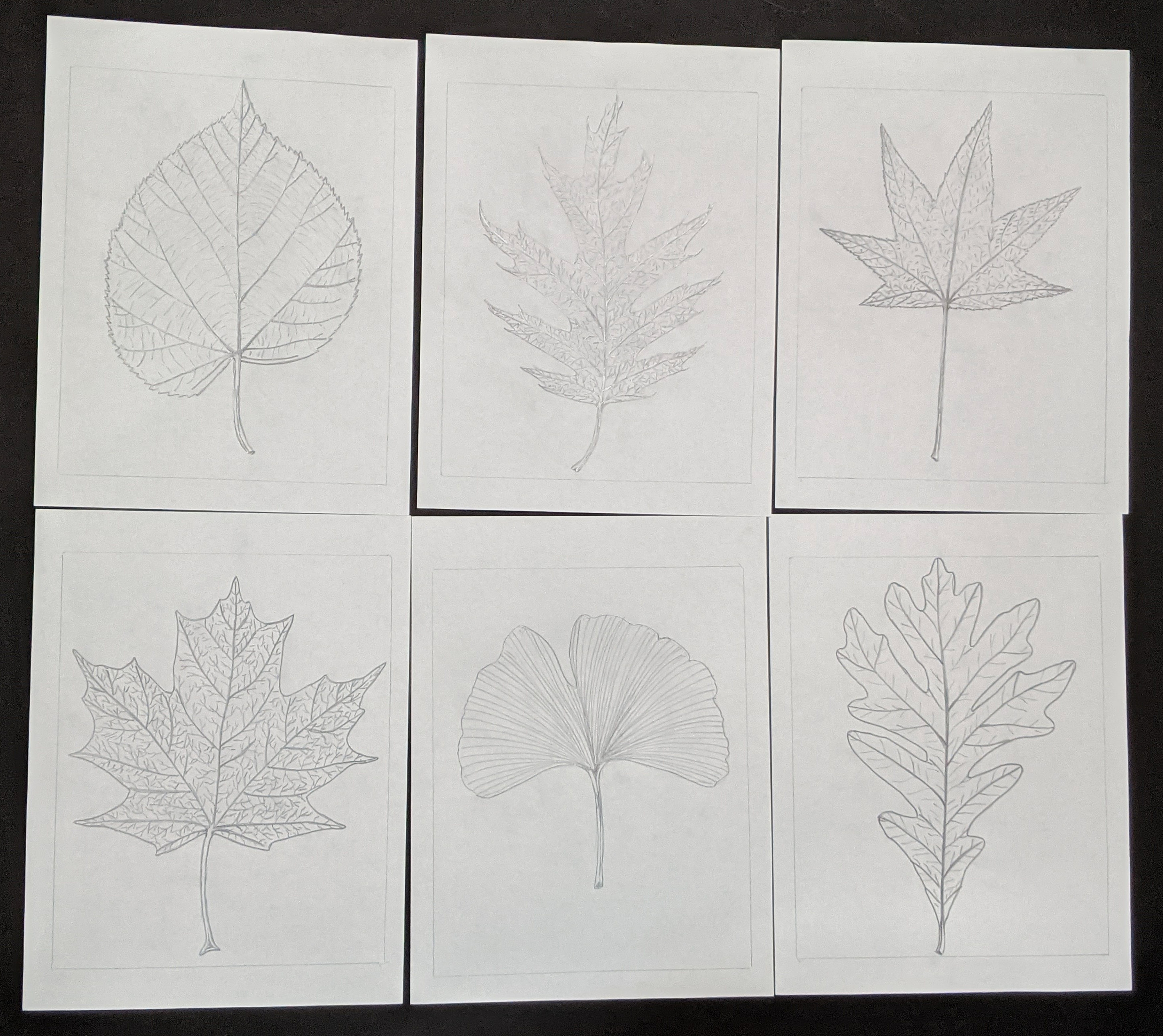
In addition to my standard black ink on white paper, I’m thinking about trying out some colors—maybe green on white paper. I’m also planning on trying out more of a variable color, with yellow, red, and green printed at the same time, which should give a neat effect, with the colors of each individual print being different and unique from the others. I also have some cool-looking colored paper that has an iridescent surface made from shell emulsion that I think would work well. There are so many possibilities!
What color schemes and leaf types would you want to see? Tell me in the comments.
Want to keep updated and see more of what I’m working on? Sign up for my mailing list here and get a totally FREE digital download of a tiger linocut print. (I promise not to be spammy with my emails—I hate that too!)
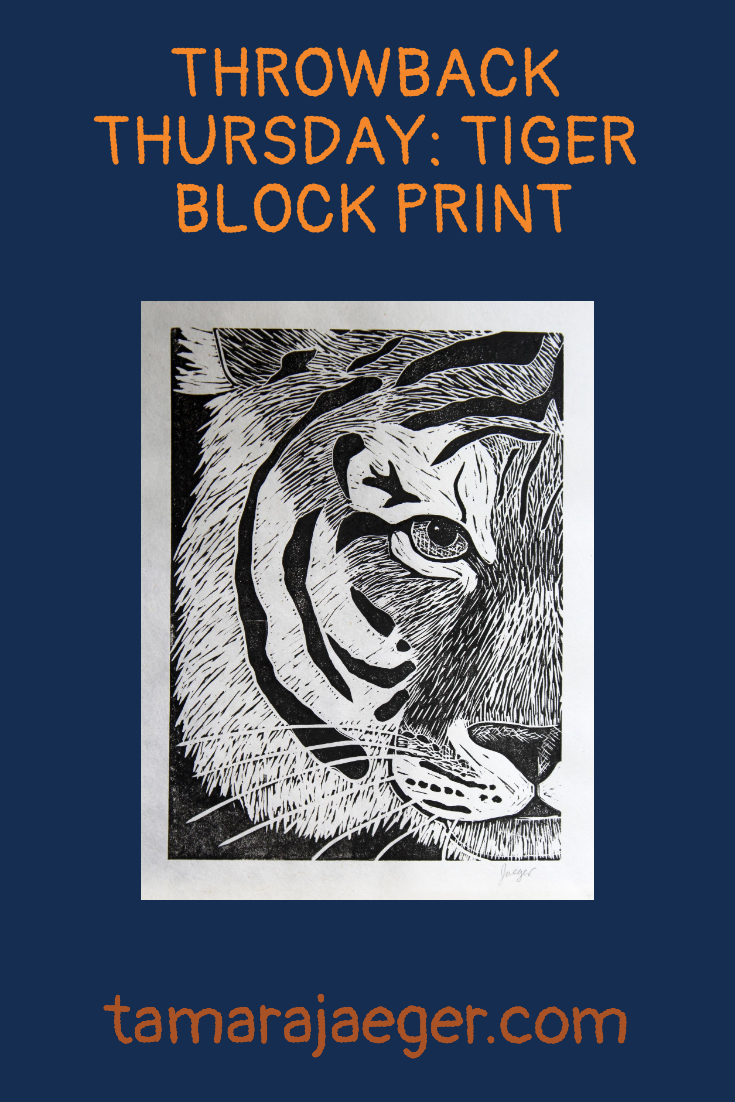

Throw Back Thursday: Tiger Linocut Print
This is still one of my favorite linocut prints. It’s based on a tiger at the Beardsley Zoo in Connecticut. The original version of this print was done using a water-based ink but I’ve since switched to a water-soluble oil-based ink and greatly prefer it!
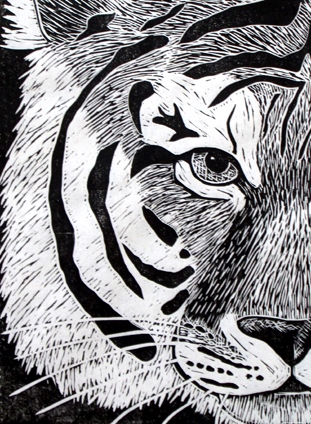
It’s a great, timeless piece in a striking black and white monochrome. I’m thinking of making another, similar tiger print. Wouldn’t that make a great pair? In the meantime, however, you can grab this fine gentleman right here in my shop or, if you prefer, over here in my Etsy shop.
Want to keep updated and see more of what I’m working on? Sign up for my mailing list here and get a totally FREE digital download of a tiger linocut print. (I promise not to be spammy with my emails—I hate that too!)
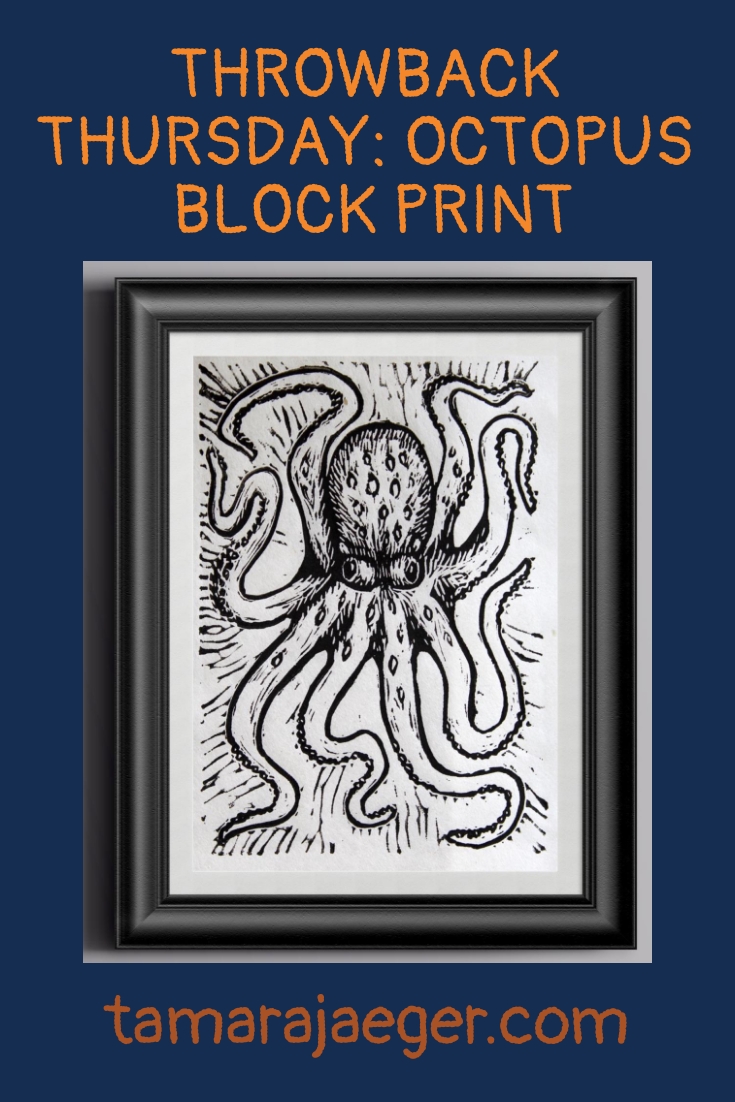

Throw Back Thursday: Octopus Block Print
I first made this fun little guy a few years ago. It was carved into one of those weird, rubbery linoleum-alternative blocks.
I’ve tried out a couple of them and they’re decent enough. Soft and easy to carve. I’ve heard people complain that you can’t get good detail using the softer material, but I’ve never had any problems carving fine details. I will admit that I prefer linoleum though.
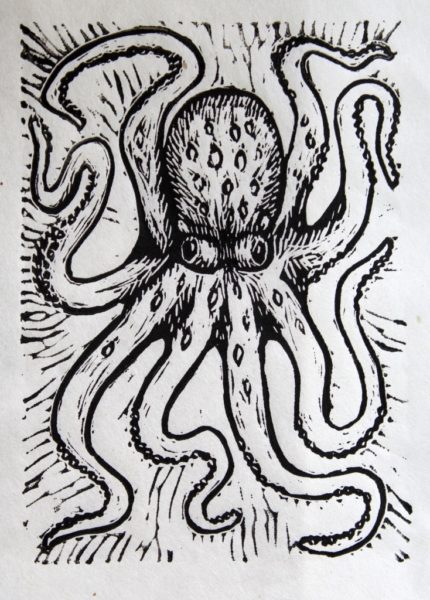
The original version of this print was done using a water-based ink but I’ve since switched to a water-soluble oil-based ink and greatly prefer it!
Spruce up any room with a dash of nautical flair and grab yourself this playful octopus print right here in my shop or, if you prefer, over here in my Etsy shop.
Want to keep updated and see more of what I’m working on? Sign up for my mailing list here and get a totally FREE digital download of a tiger linocut print. (I promise not to be spammy with my emails—I hate that too!)